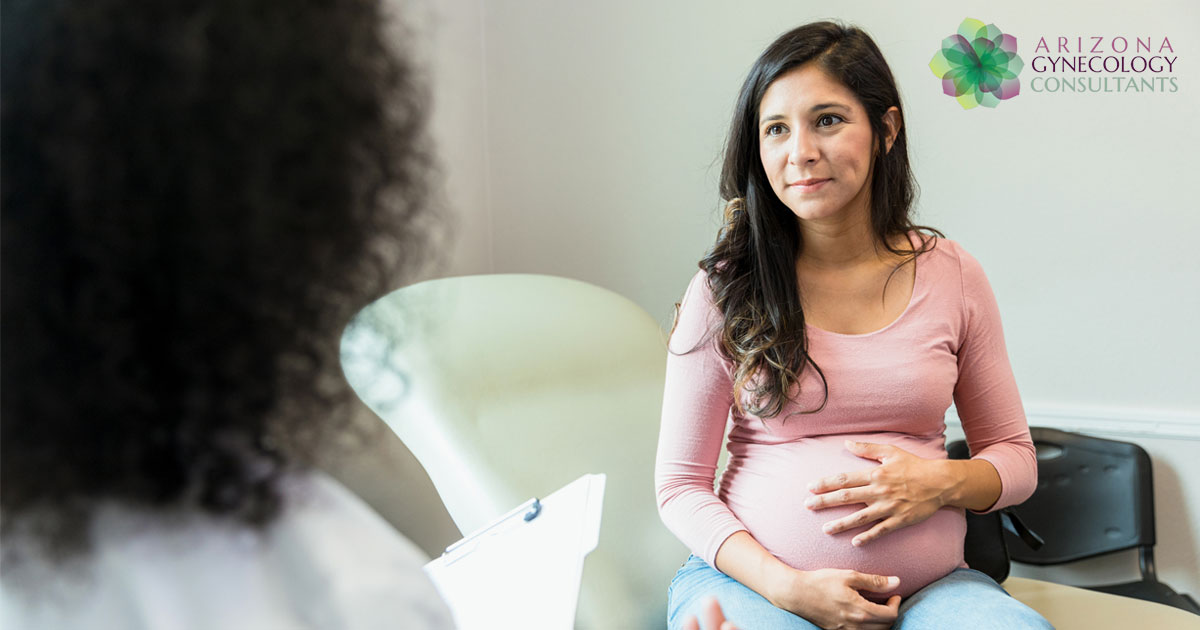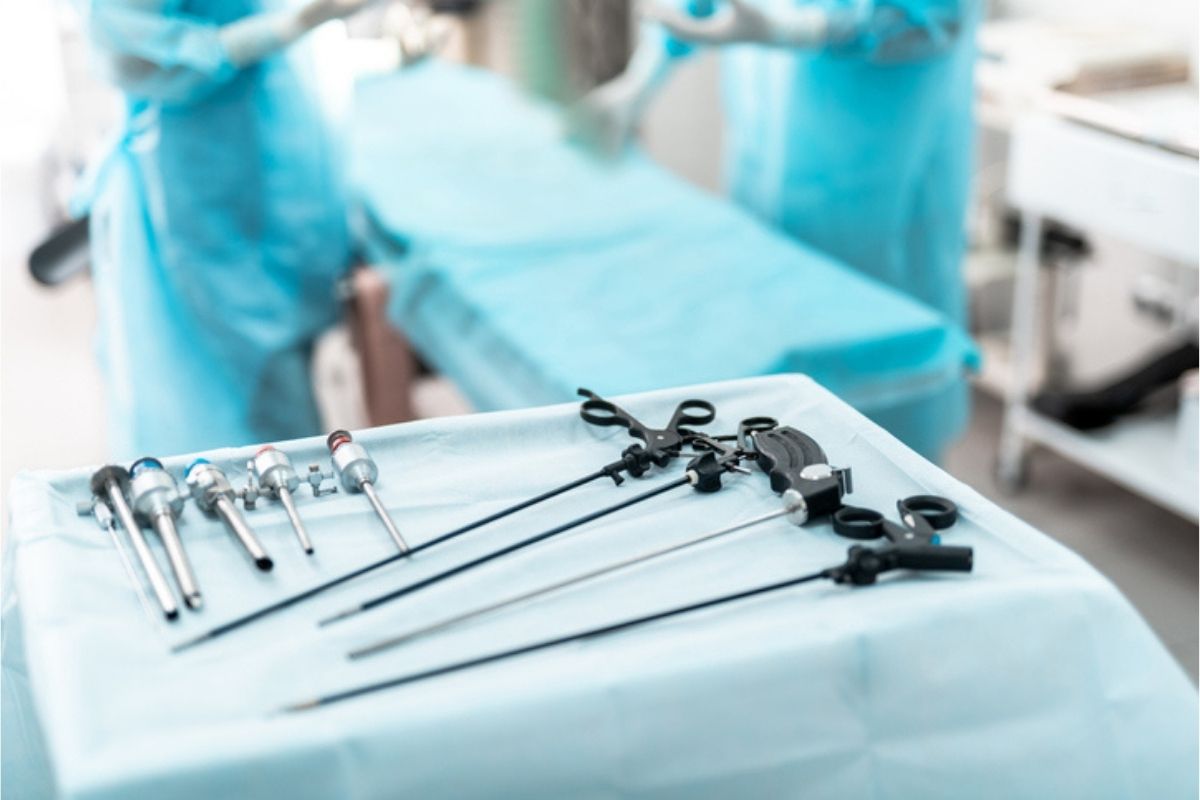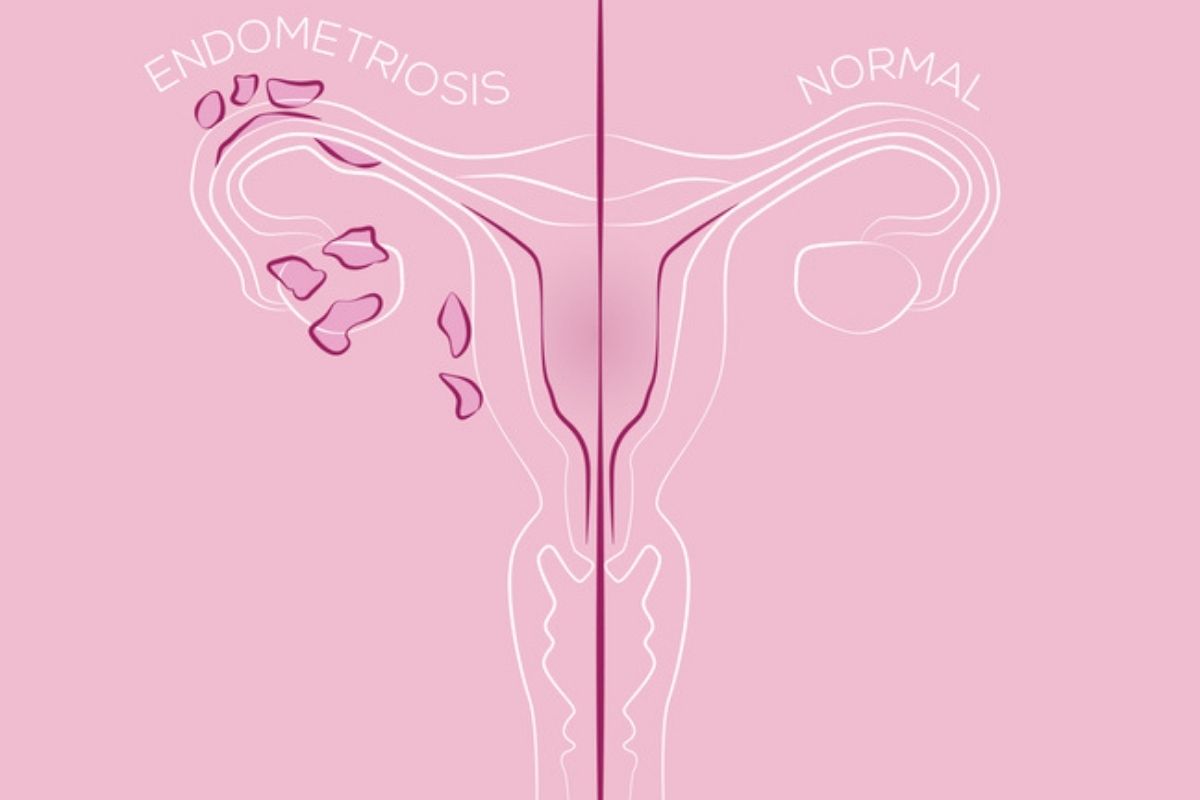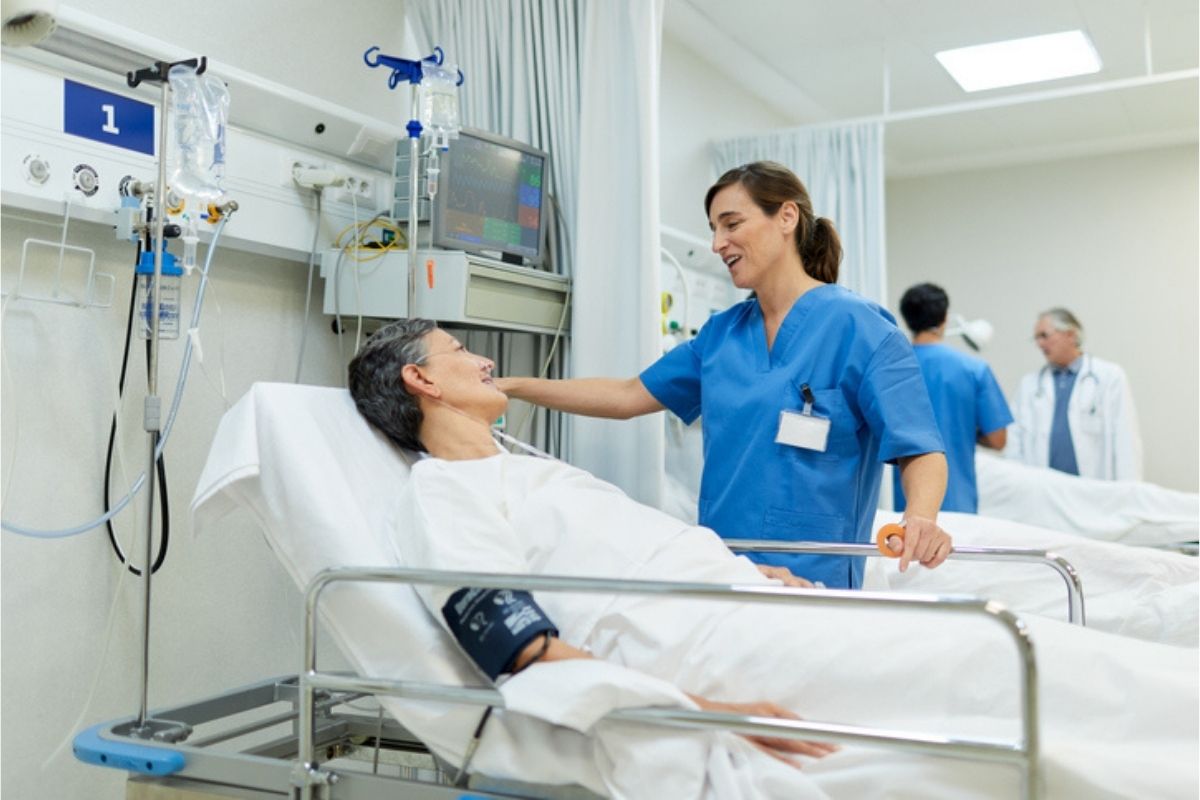Laparoscopic abdominal cerclage (LAC) is a minimally invasive surgical procedure used to prevent preterm birth in pregnant women at risk of delivering too early. Individuals with a history of cervical insufficiency, second-trimester miscarriages, and preterm labor are the primary candidates for this procedure, and it is preferred for patients with a prior failed vaginal cerclage.
The goal of laparoscopic abdominal cerclage is to provide a supportive structure that can hold the cervix in place to carry the pregnancy to term. The procedure is most successful when performed prior to conception but can be performed during pregnancy between 8-12 weeks. It is considered a safe procedure and an effective way to reduce the risk of preterm labor and delivery.
What Is Cervical Insufficiency?
The cervix is the bottom-most part of the uterus that opens to the vagina and should remain firm and closed throughout most of the pregnancy. Cervical insufficiency is the premature softening and weakening of the cervix, resulting in its inability to maintain pregnancy during the second trimester. It is also characterized by the absence of labor signs, clinical contractions, or both.
Though cervical insufficiency can appear at any time, it is often recognized around 16 to 18 weeks of pregnancy.
What Are the Benefits of a Laparoscopic Abdominal Cerclage?

The primary benefit of laparoscopic abdominal cerclage is a full-term pregnancy and successful delivery. This procedure is a beneficial treatment for women who have had multiple pregnancy losses, either due to a diagnosis of cervical insufficiency or a shortened cervix. The purpose of laparoscopic abdominal cerclage is to remedy these circumstances, and it has proven to be a successful treatment option for many women. In fact, this type of cerclage is the preferred treatment for insufficient cervix because it has a higher success rate compared to traditional vaginal cerclage.
Other benefits of laparoscopic abdominal cerclage include the following:
Higher Placement of Sutures
Compared to traditional methods of securing the cervix, the suture is placed in better proximity to the internal os at the top of the cervix, as opposed to the bottom. This placement has better results in closing and supporting the cervix for the full term of pregnancy. It provides greater mechanical support and has a decreased chance of suture migration during pregnancy.
Reduced Risk of Infection
Since the procedure is performed laparoscopically, there is less risk of infection compared with vaginal surgery. A transvaginal procedure requires the presence of a foreign object in the vagina, which creates more potential for bacteria. The transabdominal laparoscopic procedure is a safer option.
Reduced Loss of Blood
There is significantly less bleeding associated with laparoscopic abdominal cerclage than with other methods. Primarily, this is because the suture is much smaller than with traditional cerclage. Consequently, there are fewer risks associated with less blood loss.
Reduced Recovery Time
Laparoscopic abdominal cerclage can be performed as an outpatient procedure because it is minimally invasive gynecology. The procedure involves only a small incision, so recovery time is shortened. Patients can go home the same day the procedure is performed, with the potential to return to normal activities much sooner than alternative methods allow. There is also less pain and discomfort during recovery, as well as less scarring with laparoscopic abdominal cerclage.
How Is a Laparoscopic Abdominal Cerclage Performed?

A laparoscopic abdominal cerclage is a type of minimally invasive gynecology in which a doctor uses a laparoscope inserted through a small incision in the abdomen. The laparoscope allows the surgeon to view the uterus and cervix internally and determine the best placement for the suture. Once the proper position is determined, a suture is placed around the cervix to ensure that it remains closed through the rest of the pregnancy. After the procedure is complete, the incision is closed.
What Are the Risks and Complications Associated with a Laparoscopic Abdominal Cerclage?
While a laparoscopic abdominal cerclage procedure can be highly effective, like any surgical procedure, there are risks. It is important for individuals considering this treatment to understand the associated risks and unlikely but potential complications. Then, it is possible to make an informed decision.
Infection is the most common risk and can be caused by bacteria entering the abdomen during the procedure. Infections are most likely to occur at the incision site, though they can also occur elsewhere in the body. If an infection occurs, antibiotics are usually prescribed to treat it. Some patients have trouble urinating after the procedure, along with increased pain in the abdominal area. Scarring of the uterus is also a possibility, although this is typically minor and does not cause any long-term issues.
Experienced surgeons using practiced techniques limit the risk of complications. To fully understand the potential risks associated with laparoscopic abdominal cerclage, it is important for a patient to discuss these risks with the doctor performing the surgery before having the procedure.
What Are the Success Rates of a Laparoscopic Abdominal Cerclage?
The success rate of a laparoscopic abdominal cerclage depends on several factors, including the severity of the cervical insufficiency, the timing of the procedure, and the patient’s overall health. Pre-conception laparoscopic abdominal cerclage proves to be more successful in preventing repeat losses and preterm labor. It also has less risk of complications, both surgically and pregnancy-related. However, having the procedure done during pregnancy is still extraordinarily successful.
The success rate of a laparoscopic abdominal cerclage is generally good. While the success rates of doctors and practices that perform the procedure are 90% or above, an average of multiple studies have found that the procedure has a neonatal success rate of up to 96% and a gestational age of about 37 weeks at the time of delivery.
This means that in most cases, laparoscopic abdominal cerclage successfully corrects cervical insufficiency. It is important to note that success rates can vary depending on the individual case. It is also possible for the procedure to fail in some cases, so it is important to understand the risks involved before undergoing surgery.
How Long Does It Take to Recover From Laparoscopic Abdominal Cerclage?
Recovery time from a laparoscopic abdominal cerclage procedure can vary depending on the individual, but it typically takes 3-4 weeks to fully recover. Recovery is typically uncomplicated, but during this time, it is important for patients to follow their doctor’s instructions for post-operative care.
These may include resting, limiting physical activity, avoiding strenuous activities like exercise, and avoiding lifting heavy objects that could strain the abdomen. Some doctors prescribe pain medications, but non-narcotic medications should suffice. Antibiotics are sometimes prescribed to help treat a potential infection. Patients should take any medications as prescribed for optimal success.
To achieve a successful recovery and outcome, it is also important that patients attend all follow-up appointments to monitor recovery and the success of the procedure. Patients should watch for any signs of infection or other complications, such as fever, swelling, redness, or drainage at the site of the incision. If any of these symptoms do occur, the doctor should be notified immediately.
While it is typically normal for patients to return to work within a few days, it may take up to a week or two for some to feel completely normal. Most people can expect a full recovery and can return to their normal activities within four weeks.
Patients may also be given specific instructions for post-operative care, such as how often to change dressings, when to shower, and how to monitor incisions for signs of infection. It is important that patients follow these instructions carefully to ensure recovery goes smoothly. When recovery is closely monitored, the prognosis following laparoscopic abdominal cerclage is generally positive.
What Are the Long-Term Effects of a Laparoscopic Abdominal Cerclage?
Despite the benefits of this procedure, it is not often the chosen initial treatment option for cervical insufficiency because it eliminates the possibility of a vaginal birth and ensures a cesarean delivery will be necessary. This is because a vaginal delivery requires a baby to pass through the cervix to enter the birth canal and exit the vagina. A cerclage closes off the cervix to keep the baby from entering that pathway prematurely and resulting in a miscarriage. Thus, the pathway into the birth canal is closed, and the baby must be delivered via C-section.
C-section deliveries have the potential for more complications, and they may affect the delivery method for future pregnancies, so most attempts to avoid them are made. Unless necessary or unless a previous pregnancy resulted in an emergency C-section, vaginal delivery is preferred. This is a variable for many patients and should be considered carefully by the physician.
Can a Laparoscopic Abdominal Cerclage Be Left-In?
The cerclage band is a very durable material that is highly compatible with the human tissues of the cervix. Therefore, the suture can be left in. It may also be removed following delivery. If removed, subsequent pregnancies might require another cerclage procedure, but if not, vaginal delivery would be a possibility.
In cases in which the cerclage band is left on the cervix, it can remain for future pregnancies and can even be used with contraception until the patient is ready to conceive again, though it would, again, prevent a vaginal delivery. There are rare risks associated with leaving the cerclage in, and these risks should be discussed with a physician before deciding to leave it in after pregnancy.
What Are the Alternative Methods to a Laparoscopic Abdominal Cerclage?
Transvaginal cerclage is another option for this specific procedure, and there are multiple methods used to perform a transvaginal cerclage. Vaginal methods place sutures on the cervix via vaginal laparoscopy, which presents several disadvantages over placement via abdominal laparoscopy. For instance, transvaginal placement of sutures is significantly lower on the cervix and is much less supportive. It also involves more risk of infection due to entry via the vagina, with a greater potential for bacteria to enter the body. Recovery time and success rate are also decreased in laparoscopic vaginal cerclage.
What Should Patients Expect After a Laparoscopic Abdominal Cerclage?
Immediately after the procedure, patients may experience some soreness and discomfort at the site of the incision, as well as mild cramping. Discomfort may continue for a few days. It’s important to know that pain is a common side effect following the procedure, but over-the-counter pain medication can help manage this. Additionally, some women may experience difficulty urinating or have difficulty passing gas. These symptoms usually resolve on their own within a few days. Antibiotics may be prescribed to reduce the risk of infection.
It is important to rest and follow the doctor’s post-operative instructions after the procedure to ensure a smooth recovery. Again, this will include avoiding strenuous activities such as heavy lifting, running, or any other activity that puts strain on the abdominal muscles. It is also important to take medications as prescribed by the doctor to help reduce inflammation and discomfort.
Finally, it’s important to recognize that pregnancies should be considered high-risk following laparoscopic abdominal cerclage.
Is Laparoscopic Abdominal Cerclage Right For You?
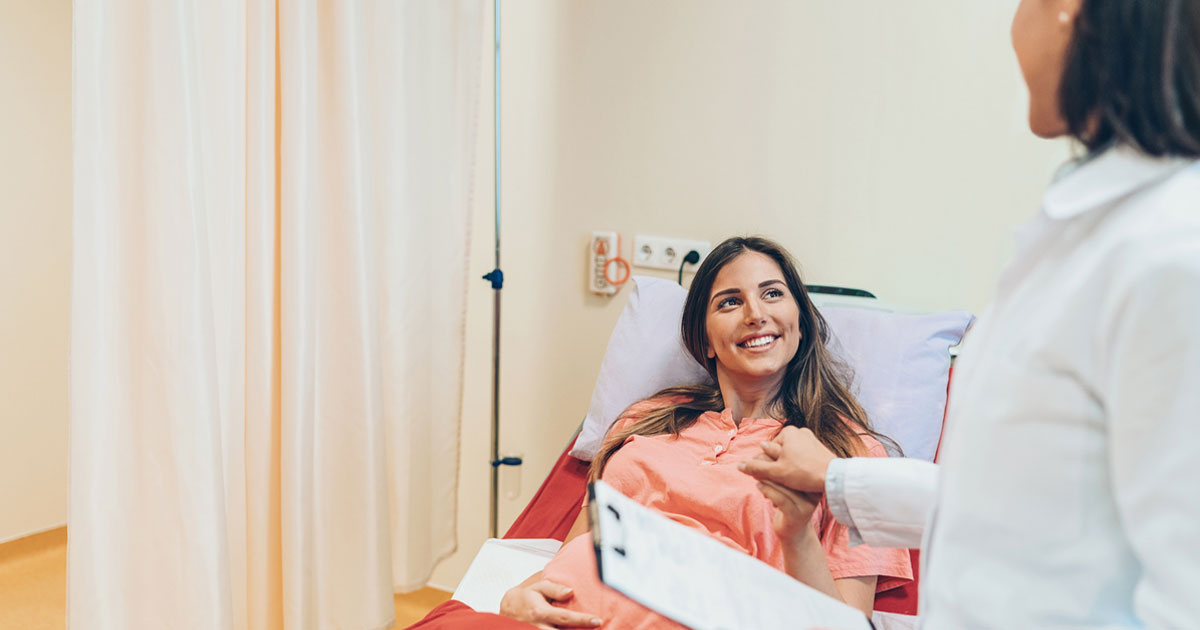
Overall, laparoscopic abdominal cerclage is a safe and effective treatment option for women experiencing certain fertility issues. It can reduce the risk of preterm birth, provide a quicker recovery time, reduce the risk of infection, and improve the chances of a successful pregnancy and delivery.
Arizona Gynecology Consultants for Laparoscopic Abdominal Cerclage
If you have an insufficient cervix or a history of preterm birth or miscarriage, you should know that laparoscopic abdominal cerclage is a successful, safe, and practical way to correct some cervical conditions that contribute to preterm labor and miscarriage.
It is not the ideal procedure for every pregnancy or pre-pregnancy, but when it is recommended by a medical professional, it is very successful in prolonging labor in the 1% of pregnancies that end early due to cervical insufficiency.
Contact us to schedule an appointment to discuss your options and determine if this procedure is right for you.
Sources
- https://pubmed.ncbi.nlm.nih.gov/35636809/
- https://www.sciencedirect.com/science/article/pii/S1553465011003736
- https://www.sciencedirect.com/science/article/abs/pii/S0301211516300148
- https://www.binasss.sa.cr/gin/21.pdf

Kristina Calligan is a sub-specialty nurse practitioner in Women’s Health. A native to Arizona she obtained her Bachelor of Science in nursing in 2006 at Grand Canyon University in Glendale, Arizona. Never one to stop striving and achieving all that she could, she completed two master degrees in Nursing Science and Business Administration in 2012. Ms. Calligan joined Arizona Gynecology Consultants in 2009. Prior to working at Arizona Gynecology Consultants, she worked as a nurse in labor and delivery at several local hospitals and a research coordinator in women’s health care.

